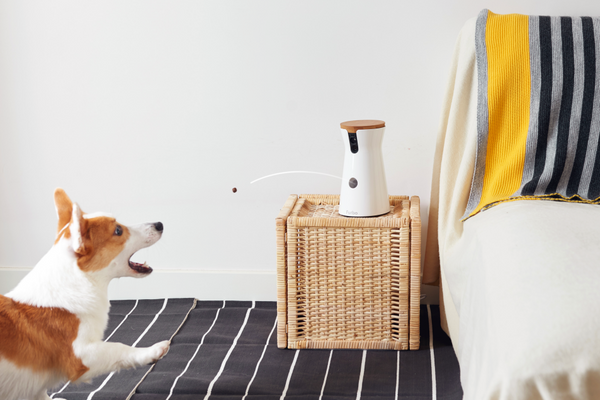Most dogs are motivated by food, so naturally, food is a very powerful training tool. We train dogs with food to shape their behaviors and reward them for following simple instructions. Dogs being trained with positive reinforcement techniques naturally learn faster and the training sessions are a lot more fun for them. In this article, we discuss the basics of training your dog with treats and how to get the best out of every training session.
Find a high-value treat

It is important that your dog really likes the treats you train him with. Using his normal kibble or dry dog biscuits won't always be effective, as your dog can easily lose interest if he is not crazy about the treats. When choosing a training treat, make sure that it is a little moist and easy to chew and swallow. The treat should be no bigger than the size of a pea. If you buy training treats at your local pet store, you can always break them into smaller pieces. Buying a roll of ham or processed meat is also perfectly fine if your dog really loves it, and they can be easily cut into small pieces. Note that you should subtract the treats from your dog's daily feeding portions as to avoid unnecessary weight gain.
The luring technique
Embed from Getty ImagesLuring is an essential part of training your dog with treats, as the treat is used to coax your dog into a certain position. For instance, by taking the treat straight down to the ground, your dog will follow your hand and as soon as your dog lies down, the treat can be released. Luring simply means keeping the treat in your hand and moving it where you want your dog to go until he reaches the correct position. For a sit, you would move the treat over your dog's nose which will automatically coax him into a sitting position.
Timing is everything

When it comes to rewarding your dog for a certain behavior or action, timing can make the difference between success and failure. It is important to only reward your dog when the instruction has been followed correctly. The reward should be given immediately when the action has been performed. For example, if you teach your dog a basic “sit”, he should be rewarded at the precise moment his bum touched the ground. Clicker training is also a valuable way to ensure that your timing is spot on. You can read more about clicker training here. Don't forget to keep the session positive and fun, so praise will also go a long way to ensuring that your dog enjoys the training session.
Short training sessions
Embed from Getty ImagesTraining sessions should not exceed 10 minutes at a time, especially if your dog is still a puppy. Training is mentally challenging for your dog and can tire him out quickly, so after 10-15 minutes they usually lose interest or start making mistakes. It is important to end training sessions on a high note before your dog starts making mistakes. Ending the training session on a high note will go a long way to making sure the information is retained in a positive manner. You can have 3 short training sessions per day, rather than a full 30-minute training session, as this will be way more effective in keeping your dog focused.
Remote training

If you are not home during the day to have regular training sessions, there are creative ways around this, like the Furbo Dog Camera. This camera allows you to speak to your dog through a two-way radio, so you can give your dog instructions. The camera dispenses treats, along with a clicking sound which is great for conditioning your dog to respond to the clicker sound upon carrying out the correct command. This product is a great alternative for training your dog even if you are not home. It should be noted that you would not be able to use a lure with this method, so it would mostly be effective to practice tricks your dog already knows.
Related Post: Why Furbo Should Replace Your Home Monitor
Fading out the treats
Embed from Getty ImagesWe don't want our dogs to become dependent on treats before they do something for us. Dogs that have been conditioned to treats, without fading them out eventually, get into the habit of only doing things for treats. There is a simple way that you can condition your dog to be reliable without treats. As soon as your dog is reliable and understands what you need from him with a certain trick like “sit”, you can start rewarding them every second time he gets the command right. This way your dog learns that sometimes his gamble pays off, making him more reliable and cementing the behavior.
Related Post: 5 Steps to Train Your Puppy to Be Home Alone
Do's and Don'ts
Embed from Getty ImagesDo:
Don't:
Training can be one of the best ways to bond with your dog, as it strengthens your relationship. Training with positive reinforcement is humane and constructive and a far better way for your dog to retain information. Combine that with treats he loves, and your training sessions can be a walk in the park.








